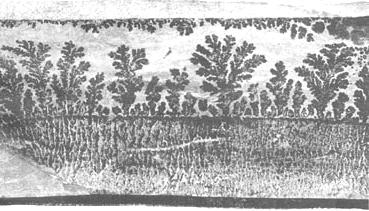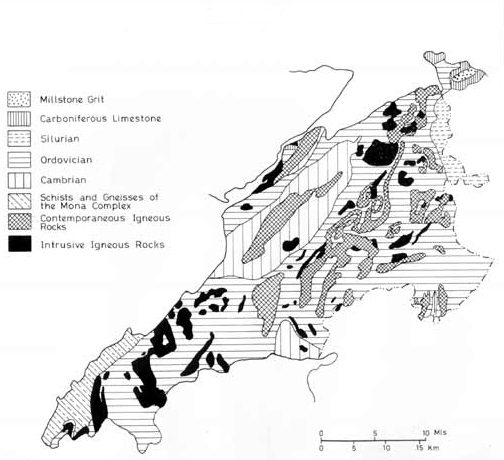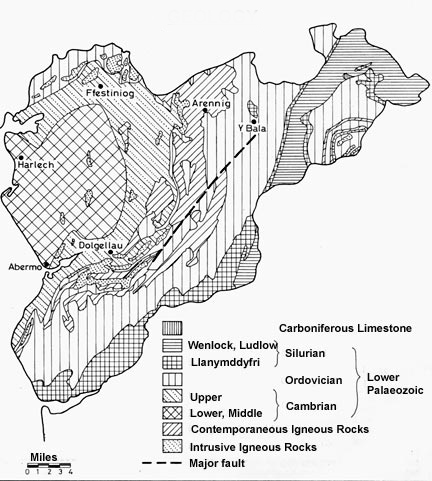Slate - The Slate Formation
There are five main areas where slate of commercial importance
is found. Firstly, in central Gwynedd, inclusive of Bethesda,
Llanberis and Nantlle. Here, the slate beds belong to the
Cambrian age. Secondly, the area between Blaenau Ffestiniog and
Capel Curig where the slate beds belong to the Ordovician period. Thirdly, the area between Tywyn and Dinas Mawddwy around
Corris and into adjacent parts of Montgomery, where the slate
comes from the Ordovician and Silurian era. Fourthly, the area
around Llangollen and Corwen in Denbighshire and eastern Gwynedd
where the slates are of the Silurian age. Fifthly, the Preseli
area of Pembrokeshire and the adjoining parts of Carmarthenshire,
where the slates belong to the Ordovician period.
All of this slate was formed during the Palaeozoic Era, at a
time, when what we today know as north Wales was buried beneath
the sea. It was during the Cambrian period that mud, pebbles and
sand collected at a depth of 1,525 m. in the Caernarfon area, and at
around 4,000 m. in Meirionydd. During the Ordovician period,
volcanoes erupted on the seabed when over time, sediment buried
what we now call slate to a depth of around 7,600 m. Violent
disturbances during the Silurian and Devonian periods which
presses the already formed rocks together. Both these sedimentary
and volcanic rocks were folded by this pressure into mountains
and formed part of a chain running approximately from the
north-east to the south-west.
 Right:
Dendrites have formed on this Nantlle slate giving a
plant-like appearance. Right:
Dendrites have formed on this Nantlle slate giving a
plant-like appearance.
The Arfon Slate Area
So, the slate beds of Caernarfon stretching from the area from
Bethesda via Llanberis, Moel Tryfan and Nantlle to Penygroes are
of Cambrian formation. These slate beds include two of the largest quarries in
the world, namely the Dinorwig and Penrhyn Quarries that are on
opposite sides to the Elidir Fawr. On the opposite side of
the valley to Dinorwig, above Llyn Padarn, the Glynrhonwy
Quarries are found. Six miles south-west from Llanberis are the
quarries of the Nantlle Valley, where the slate outcrops on the
floor of the valley. Whereas the quarries at Penrhyn and
Dinorwig are worked in open terraces, at Dorothea and Penyrorsedd
Quarries they are worked in deep pits.

The Merionnydd Slate Area
The most important slate beds of the Ordovician rocks are to
be found around the Blaenau Ffestiniog area, and since the slate
formations in Meirionnydd generally dip deep under the mountains,
the slate is mined. To the north-east of Blaenau Ffestiniog are
the old quarries at Penmachno and Dolwyddelan. Other commercial
slate producing areas of this period occur in the area from
Cricieth and Porthmadog to the south-west, running towards the
River Conwy near Trefriw in the south-east.

|